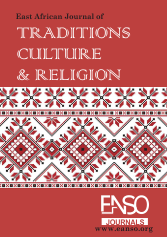Islamic Perspectives on Age of Consent: An Analytical Study in the Contemporary World
Abstract
Setting and harmonizing the minimum age for sexual relations has become a public outcry led by international humanitarian organizations. Neither the classical religious laws nor the laws of ancient societies, as seen today in many Muslim and non-Muslim countries, had a harmonized age of consent. Although the idea dates back to the Industrial Revolution, its goal has traditionally been attributed to individual societies to protect children from sexual exploitation and deprivation of basic human rights. Recent research into child abuse and exploitation has shown that the number of child abuse cases is increasing rapidly. This consequence has led to United Nations humanitarian organizations calling for the age of consent to be harmonized to 18 years. However, this idea has not found global consensus. Different countries and states have different ages of consent, which are influenced by factors such as individual maturity, cultural differences, parental rights, legal clarity and social norms. This article conducts an in-depth documentary analysis to examine the age of consent from an Islamic perspective in today's society, based on the Islamic Maqasid Sharia. Literary works suggest that early marriage and the protection of girls from exploitation and fundamental rights are the main reasons for the global demand for harmonization of the age of consent. However, the paper notes that age of consent harmonization alone cannot adequately address child exploitation. Studies have shown that child abuse, including rape, occurs at the early stages of learning and voluntary sexual relationships between children often begin as early as primary school. Given these findings, the paper recommends that age of consent determination should be delegated to countries or states in consultation with their religious institutions. The aim is to ensure that setting the age of consent benefits and does not harm individuals, as traditional norms and cultural realities are best understood by local citizens and religious leaders. Furthermore, the paper emphasizes that moral values should be a primary concern in solving this problem, supported by faith-based teachings and behaviour education through schools and religious gatherings
Downloads
References
Ahmad, A. W. (2003). Public interests (Al-Masalih al-Mursalah) in Islamic jurisprudence: An analysis of the concept in the Shafi’i school (pp. 27-28). Kuala Lumpur: International Institute of Islamic Thought and Civilization.
al-Nawawī, Y. ibn S., & Subkī, T. al-D. (1991). Al-Majmūʿ Sharḥ al-Muhadhab (Vol. 16, p. 409). [Bayrūt]: Dār al-Fikr.
al-Suyūṭī, J. al-D. (1990). Al-Ashbāh wal-Naẓāʾir fī Qawāʿid wa Furūʿ Fiqh al-Shāfiīyah (Vol. 1, pp. 7-8). Bayrūt: Dar al-Kutub al-'Ilmiyah.
al-Shatibi. Muwafaqat (Vol. 3/3, pp. 14-15).
al-Tirmidhī, M. ibn Ī. (1998). Sunan al-Tirmidhī (Vol. 3, p. 386, No. 1921). Bayrūt: Dār al-Ġarb al-Islāmī.
Browne, P. (2016, May 27). Why the average ancient Roman worker was dead by 30. The Local. Retrieved from https://www.thelocal.it/20160527/groundbreaking-study-reveals-brutal-realities-of-life-in-ancient-rome
Herbermann, C. G. (1913). St. Joseph. In The Catholic Encyclopedia: An international work of reference on the constitution, doctrine, discipline, and history of the Catholic Church. Knights of Columbus Catholic Truth Committee. Retrieved from https://www.newadvent.org/cathen/08504a.htm
Harper, K. (2015). Marriage and family. In S. F. Johnson (Ed.), The Oxford Handbook of Late Antiquity (p. 685). New York: Oxford University Press.
Ibn Kathir. Tafsir al-Qur’an al-Azim — commenting on Al-Qur’an 4:6.
Ibn Mājah. (1975). Sunan Ibn Mājah (Vol. 2, p. 784, No. 2340). Bayrūt: Dār Iḥyā’ al-Turāth al-'Arabī.
Ibn al-Humam, I. Fath al-Qadir (Vol. 4, p. 280).
Kamali, M. (1991). Principles of Islamic jurisprudence (p. 45). Kuala Lumpur: Islamic Texts Society.
Noonan, J. T., & Thompson, A. (1993). Decretals of Gregory IX, book four, C. 3.
Noonan, J. T., & Thompson, A. (1993). Marriage canons from the Decretum of Gratian and the Decretals, Sext, Clementines and Extravagates (C. 30 q. 2). Retrieved from http://legalhistorysources.com/Canon%20Law/MARRIAGELAW.htm
Parrot, A. (2021). The historical context of age of consent laws. Journal of Legal History.
Rapoport, Y. (2012). Royal justice and religious law: Siyasah and Shari’ah under the Mamluks. Mamluk Studies Review, 16, 89-92.
Robertson, S. (n.d.). Age of consent laws. In Children and youth in history (Item No. 230). Retrieved from https://chnm.gmu.edu/cyh/items/show/230
Tucker, J. (1994). Muftis and matrimony: Islamic law and gender in Ottoman Syria and Palestine. Islamic Law and Society, 1(3), 271.
UN Convention on Age of Marriage. (1964). Safeguarding children's rights in the context of marriage.
UNFPA. (2020). Harmonizing age of consent laws: A global perspective. United Nations Population Fund.
UNICEF. (2016). Protecting children from sexual exploitation and abuse. United Nations Children's Fund.
Waites, M. (2005). The age of consent: Young people, sexuality, and citizenship (p. 63). Hampshire: Palgrave Macmillan.
Welchman, L. (2000). Beyond the code: Muslim family law and the Shari‘ judiciary in the Palestinian West Bank (pp. 108-109). The Hague: Kluwer Law International.
World Population Review. (2021). Age of consent by country 2021. Retrieved June 14, 2021, from https://worldpopulationreview.com/country-rankings/age-of-consent-by-country
The Bible.
The Qur'an.
Copyright (c) 2025 Juma Shaban Chibololo

This work is licensed under a Creative Commons Attribution 4.0 International License.




























